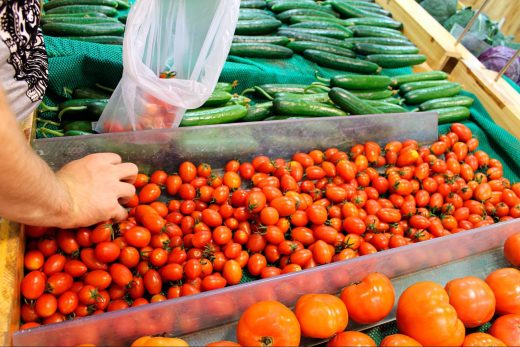
The hospitality industry has been going through a rough time these past few years. First there were lockdowns that shuttered many restaurants, and now the inflation and supply issues that we always knew would be the outcome of the pandemic are really starting to hit, and hard.
This edition of Weekly Bites looks at some of the ways inflation and supply chain disruptions are having an impact on the culinary industry. Awareness is always the first step, especially when the rest of the path is unclear.
For restaurants that already juggle a razor-thin margin of profit, inflation can often spell disaster unless they too raise prices or shrink portions. Consumers who are facing inflated prices in every facet of life start to opt out of eating out, especially as they see menu prices increase. This leaves restaurants with a seemingly lose-lose decision of either absorbing the increased price of ingredients, or potentially alienating customers by increasing prices. Supply chain disruptions also make it difficult for restaurants to forecast ingredient availability and provide a consistent menu.
While these three stories highlight how inflation and supply chain disruptions are challenging restaurants, they also offer a glimpse into how restaurants are adapting in order to continue providing food for their communities.
Are the days of farmers markets numbered?
Farmers markets are essential community gatherings that support farmers offering produce and small food businesses. Unfortunately, the increase in gas prices and ingredients is starting to affect vendors at farmers markets. Many small businesses get a lot of sales and visibility from these markets, and they too are being affected by inflation.
Because of the lack of a middle man in small-scale farming, inflation is less reflected in the price of produce at farmers markets as it is by mass-produced produce at supermarkets. As a result, consumers are realizing it’s not that much more expensive to shop at a farmers market, and are viewing the farmers market as an in-budget option.
What do these changes mean for restaurants who source specialty ingredients from farmers markets?
A spicy barter
Supply chain disruptions tend to result in shortages of seemingly random items. From empty car dealerships to the undersupply of baby formula, it’s difficult to predict what essential item will be next. Sriracha — a hot sauce that we certainly consider to be an essential item — is the latest victim, with shortages reported around the world.
Sriracha producer Huy Fong Foods Inc. says that recent weather patterns have led to a low supply of chile peppers that are expected to last at least a few more months. For some people, this minor inconvenience simply means the loss of their favorite hot sauce. But for Vietnamese communities and eateries, the lack of sriracha means losing access to one of their core condiments.
Bé Ù, a Vietnamese eatery located in Los Angeles, is facing this challenge by offering customers a deal they can’t refuse — part with a precious bottle of the hot stuff and receive a free banh hi (Vietnamese sandwich), or popcorn chicken. Given that you can then squeeze a few drops (or more, we don’t judge) of sriracha on your food, we think it’s a great deal.
This fun story brings up an important conversation about how culinary businesses can adapt to supply chain disruptions while still serving their communities and customers.
Can BBQ survive inflation?
An obvious reaction to inflation is to raise prices on menus in order to reflect the higher cost of ingredients. For restaurants in big cities, where diners are often strangers, it’s a sound strategy. But for small town eateries, where diners are more like family, raising prices can be a complicated and fraught strategy. How do you tell people who count out exact change that you’re raising prices by 10%?
This is the problem that’s facing many local BBQ restaurants across America. The New Yorker recently highlighted this challenge in small town Texas, but eateries across the country are also facing difficult decisions because of inflation. With the price of beef spiking 20% over 2020 alone, how do BBQ restaurants remain profitable?
Raising prices is one option, as is “shrinkflation” — the decision to keep prices the same and instead cut portion sizes. Both options are meeting resistance in the communities that these eateries serve, putting restaurant owners in a difficult position.
How can community eateries continue to feed their communities while adjusting to inflation? This is not a simple question with a simple solution, but we’ll be keeping an eye out for examples of restaurants that are able to do it successfully.
Community and relationships are key
This edition of Weekly Bites covered three stories of how inflation and supply chain disruptions are affecting the culinary industry. As we’ve seen from pandemic lockdowns, however, desperate times often give birth to creative solutions and lasting change.
We don’t yet know how the culinary industry will shift in response to inflation and supply chain disruption, or if that change will be permanent. But as with the pandemic, we think that community and relationship building will be key to survival and positive change.
~~~~
Chef Works blends fashion and functionality to provide chefs and other industry workers with apparel that looks good and gets the job done. Have you explored our online catalog today for the latest styles?


